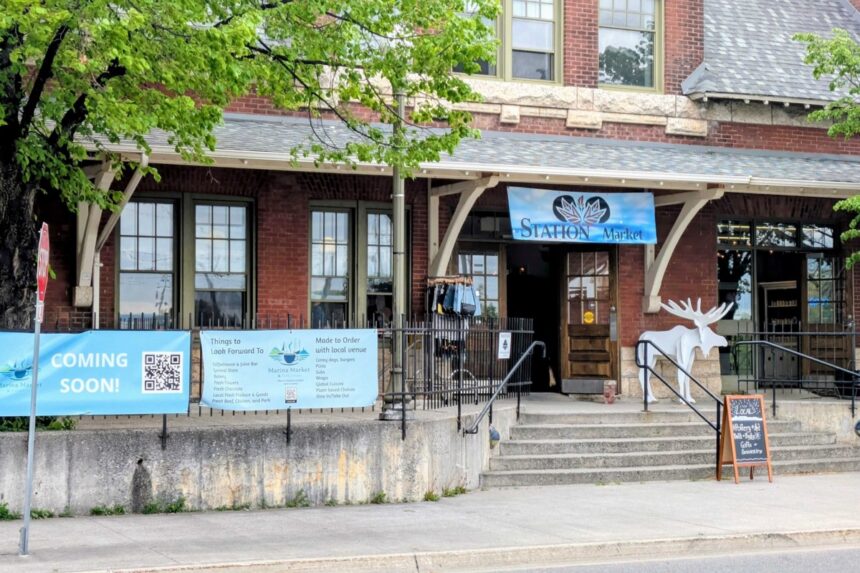The whistle of Thunder Bay’s past is finding new rhythm at the city’s historic train station, where hammers and paint brushes have replaced the familiar rumble of locomotives. After years of anticipation, the century-old Canadian Pacific Railway station is set to reopen its doors as an artisan and food marketplace, breathing fresh life into a space that once connected the Lakehead to the rest of Canada.
Walking through the partially renovated building last week, I couldn’t help but notice how the station’s bones remain proudly intact. Vaulted ceilings still soar overhead, while workers carefully restore the original terrazzo flooring that welcomed countless travelers during the golden age of rail.
“This is about preserving a piece of Thunder Bay’s soul while creating something new for our community,” explained Sarah Johnston, the project’s lead developer. “We’ve worked closely with heritage experts to maintain the building’s character while adapting it for modern use.”
The $4.2 million renovation project represents one of the most significant heritage conversions in Northwestern Ontario in recent years. City records show the station, built in 1910, has sat largely unused since passenger service ended in 1990, prompting concerns about its deterioration.
For Thunder Bay residents like Malcolm Cooper, who remembers departing from this very station as a young man, the transformation carries emotional weight.
“I left from here in 1965 to find work in Toronto,” Cooper told me during a community preview event. “Never thought I’d see the inside of this place again. They’ve done it right – you can still feel what it was, but it’s got a new purpose.”
The market will feature 32 vendor spaces, with priority given to local artisans, food producers, and craftspeople. Already, more than 50 applications have been received, according to Thunder Bay Economic Development Commission figures.
Lisa Sanderson, a local potter who secured one of the coveted spots, believes the market addresses a critical gap in the city’s retail landscape.
“We’ve needed a permanent, year-round space where makers can sell directly to customers,” Sanderson explained while arranging samples of her work. “Farmers’ markets are seasonal, and craft shows come and go. This gives us stability and a beautiful space that tells a story.”
The economic impact could be substantial. A report from the Thunder Bay Chamber of Commerce suggests the market could generate approximately $3.8 million in annual sales while creating 45-60 part-time and full-time jobs. Perhaps more importantly, it provides an anchor for the waterfront district that has seen uneven development over the past decade.
City councillor Rebecca Morden, who championed the project through several budget cycles, sees the marketplace as more than just preservation.
“This isn’t about nostalgia – it’s about smart economic development,” Morden said during last month’s council meeting. “We’re adapting our heritage buildings to create spaces where small businesses can thrive and residents can connect.”
The food hall portion of the market will feature eight local vendors offering everything from Indigenous cuisine to Finnish-inspired pastries – a nod to the cultural tapestry that has defined Thunder Bay for generations.
Chef Martin Picard, who plans to open a stall featuring locally-sourced Lake Superior fish, believes the market will become a culinary destination.
“We’ve got incredible food producers around Thunder Bay, but limited places to showcase their work,” Picard said. “This will be a place where visitors can literally taste what makes our region special.”
The project hasn’t been without challenges. Construction delays pushed the opening back nearly seven months, and remediation of lead paint added nearly $340,000 to the budget, according to documents obtained through Freedom of Information requests.
Some community members have also questioned whether public money should have supported the renovation. The federal government contributed $1.8 million through heritage grants, while the city invested $950,000 and private developers covered the remainder.
“I understand the concerns about public spending,” admitted Johnston. “But when you consider the alternative – watching another historic building crumble – the investment makes sense. Plus, we’re creating a sustainable business model that will support local entrepreneurs for years to come.”
The market’s opening coincides with growing interest in Thunder Bay’s waterfront district, where property values have increased 18% over the past three years according to local real estate statistics.
For visitors like Marnie Campbell, who traveled from Winnipeg to attend last weekend’s preview, the station’s transformation represents something that goes beyond economics.
“I remember arriving here as a child to visit my grandparents,” Campbell said, gazing up at the carefully restored ceiling. “It feels right that this place is becoming a gathering spot again. Some buildings just have that special feeling.”
The Thunder Bay Artisan Market is scheduled to open fully by mid-June, just in time for the summer tourism season. Organizers expect it will attract both locals and visitors, particularly those arriving on the cruise ships that now regularly dock in the harbour.
As I left the station – still a construction zone but clearly taking shape – a worker was carefully reinstalling the original brass hardware on one of the main entrance doors. It seemed a fitting metaphor for a project that’s linking Thunder Bay’s past with its future, one carefully preserved detail at a time.






